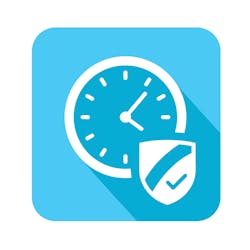RTLS for Asset Tracking: From Luxury to Necessity
When we first considered installing a real-time locating system (RTLS) at Billings Clinic to track mobile equipment back in 2012, the projected benefits simply couldn’t justify the cost. Now, however, RTLS asset tracking has become a much more realistic option. In fact, we no longer consider RTLS a “nice-to-have,” but instead a “must-have.”
A variety of factors have made RTLS for asset tracking more practical here at Billings Clinic, the largest healthcare organization in Montana. First of all, we were able to implement the Versus Advantages Asset Management solution across our 56-acre campus, which includes a four story, 304-bed hospital, without having to install a proprietary network across the entire campus. Instead, we use our existing RTLS network installed for nurse call automation, combined with our existing Wi-Fi system, to track hundreds of pumps, beds, lifts, wheelchairs and other assets. The RTLS runs off the infrared (IR) sensors installed for nurse call in inpatient areas, and off the Wi-Fi in other areas, making the investment much more feasible. Now staff members can locate equipment down to the room in the inpatient areas and determine the general location of assets in the ancillary areas.
What’s more, staff are not only able to locate equipment, they also can manage periodic automatic replenishment (PAR) levels on 12 units. The ICU, for example, determined their PAR level as 36 intravenous (IV) pumps. When their number drops below that level, the RTLS sends an alert that replenishment is needed, helping to ensure clinicians always have pumps available for patient care.
Tim Killmer
Out-of-the-Box Benefits
With all this functionality, RTLS has become a mature technology that brings immediate value to our healthcare organization. With RTLS for asset tracking in place, we now are able to:
Efficiently manage IV pumps on the nursing units. Instead of physically running around to determine exactly where the IV pumps are—and are not—nurses use the RTLS system to immediately determine which units have an abundance of pumps and to quickly retrieve pumps that are required for patient care.
Locate specialty equipment quickly. Clinicians also frequently need to find a variety of specialty equipment for patient care. RTLS takes the legwork out of locating items such as bladder scanners, PCU pumps, syringe pumps, capnography monitors and patient lifts.
Easily find and repair equipment. Without RTLS in place, clinicians would call biomedical staff to request that equipment be repaired. However, when biomedical staff arrived on the clinical unit, they often had a hard time locating the equipment that required attention. So, the biomedical staff member would walk around the area searching for the equipment, sometimes not realizing that another staff member had already retrieved it. With RTLS, however, the biomedical staff member can see exactly where the equipment is at any time, eliminating the search altogether.
Quickly locate potentially life-saving patient care devices. The RTLS can help staff members quickly find lifesaving equipment such as a pacemaker box, which is used to regulate the heartbeat of cardiovascular patients. These sometimes get misplaced when patients are transferred from one care area to another, causing an all-out search to ensue, consuming the time of multiple nurses and staff members. Now we tag all our pacemaker boxes and can immediately find the equipment when needed.
Efficiently perform preventive bed maintenance. Staff members begin the bed maintenance process on all unoccupied beds, leaving the occupied beds for later. Formerly, it would be easy to track the first round of beds. However, when staff members started on rounds two and three of the maintenance initiative, they would often go back to the rooms where the occupied beds were only to find they had moved. As such, it would take many weeks to track down and perform the required maintenance on each and every bed. With the RTLS system, staff members know exactly where the beds are and whether or not they are in need of the maintenance service. What used to be a months-long process now takes less than half the time.
Manage equipment recalls. Equipment recalls, especially when they are related to patient care equipment such as IV pumps, need to be addressed immediately. Finding hundreds of affected devices, however, can take an inordinate amount of staff time—and potentially affect patient care. With RTLS in place, we are now able to determine the exact location of each affected device and remove it from service.
With an RTLS infrastructure, staff no longer spend time searching for equipment—instead using that time providing direct patient care, efficiently maintaining assets for safer patient care, or performing other value-added tasks. We’ve enabled our staff members to truly do the jobs that they are trained to do, instead of wasting valuable minutes and hours searching. As a result, we are helping achieve our health system’s goal to provide the best clinical quality, patient safety, service and value.
Tim Killmer has 28 years of experience in information technology as both a network engineer and systems analyst. He's been with Billings Clinic for the last 11 years.



